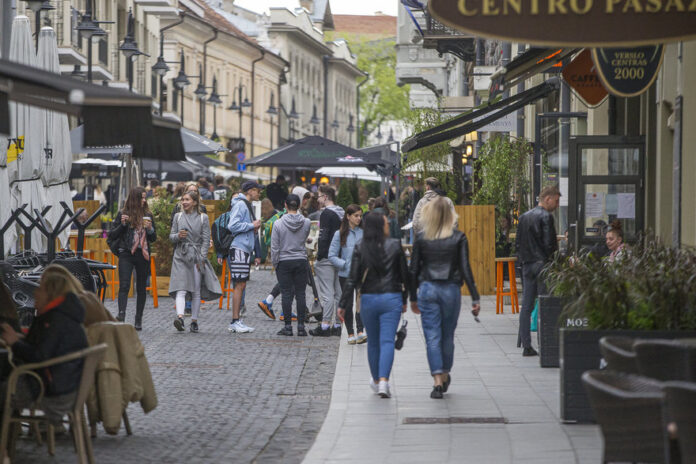
According to data from the Central Project Management Agency (CPMA), life is improving in Lithuania. The CPMA evaluated the Quality of Life in various municipalities in the country, from 2013 to 2021, finding that many of them experienced the most significant growth in material living conditions, residents’ entrepreneurship, and competitiveness. Among the municipalities with the highest Quality of Life Index (QLI) are the cities of Vilnius, Kaunas, and Klaipeda, as well as Kaunas District and Neringa Municipality.
“Quality of life indicators allow for a statistical assessment and display various complementary aspects of the quality of life. The Municipal Quality of Life Index (QLI) essentially supplements the Gross Domestic Product indicator, which is traditionally used as a measure of a country’s economic and social development,” commented CPMA expert Valius Serbenta.
Lithuania’s Municipalities QLI is composed of 41 indicators reflecting the quality of life in six areas: material living conditions, residents’ entrepreneurship and business competitiveness, health services, education services, demography, civic and community activity, as well as public infrastructure, quality of living environment, and safety.
“Quality of life is associated with the ability to secure an adequate level of material well-being, defined by income related to work and employment, as well as housing. Improving quality of life is indicated by satisfaction with one’s health, increased accessibility and quality of education and social services, intensified participation in cultural life, as well as a favorable living environment – reduced environmental pollution and increased public safety,” Serbenta noted.
During the period analyzed by the CPMA from 2013 to 2021, the sub-index of material living conditions experienced the most rapid growth in all the country’s municipalities. On average, it increased by 138 percent in all municipalities. The fastest growth was observed in rural municipalities (148 percent) and resort municipalities (133 percent).
The Municipal QLI also shows a significant increase in the entrepreneurship and competitiveness sub-index over the period analyzed, with an increase of almost 98% in all municipalities. However, the demography, civic and social activity sub-index decreased by 10%, which is considered to be due to the strong demographic changes resulting from the drop in birth rates and high emigration over the period analyzed.
The QLI module is intended for everyone. First, it is aimed at central and local governments seeking to make data-driven decisions to reduce differences between municipalities and to improve the residents’ quality of life. The module is also useful for residents wishing to find out where changes should be made to improve the living environment in their area.
“Looking at the QLI ranking of municipalities, one should assess to what extent these indicators reflect the situation inherited over decades or even centuries and how much they reflect each municipality’s efforts to improve the situation in various areas over the past 8 years,” said Serbenta.
The possibility for Lithuanian municipalities to compare with each other on the basis of the Quality of Life Index (QLI) is a very welcome initiative: healthy competition based on analytical data can encourage individual municipalities to strive for greater well-being of their citizens. At the same time, it is an opportunity for municipalities to assess where they are and in which direction they should move – to strengthen education or social services, to foster the entrepreneurial spirit of their residents and the competitiveness of their businesses, or to focus more on improving material living conditions.
The Municipal Quality of Life Index (QLI) has been compiled to assess the differences between Lithuanian municipalities since 2013. The model and index of the quality of life used in the assessment of the impact of the European Union (EU) structural funding on the quality of life and reduction of social exclusion and poverty in Lithuania was chosen as the basis for the Municipal QLI.





























